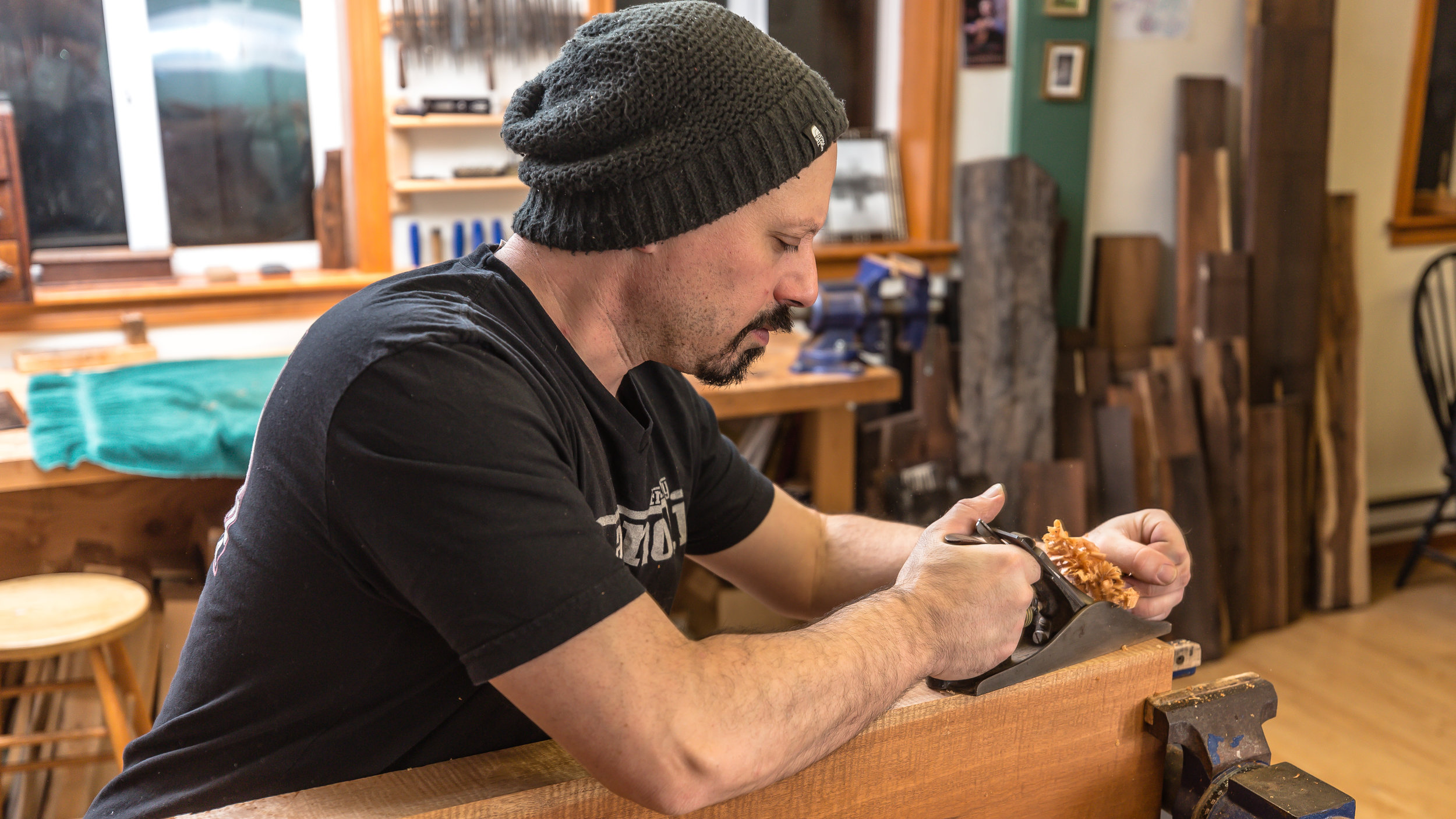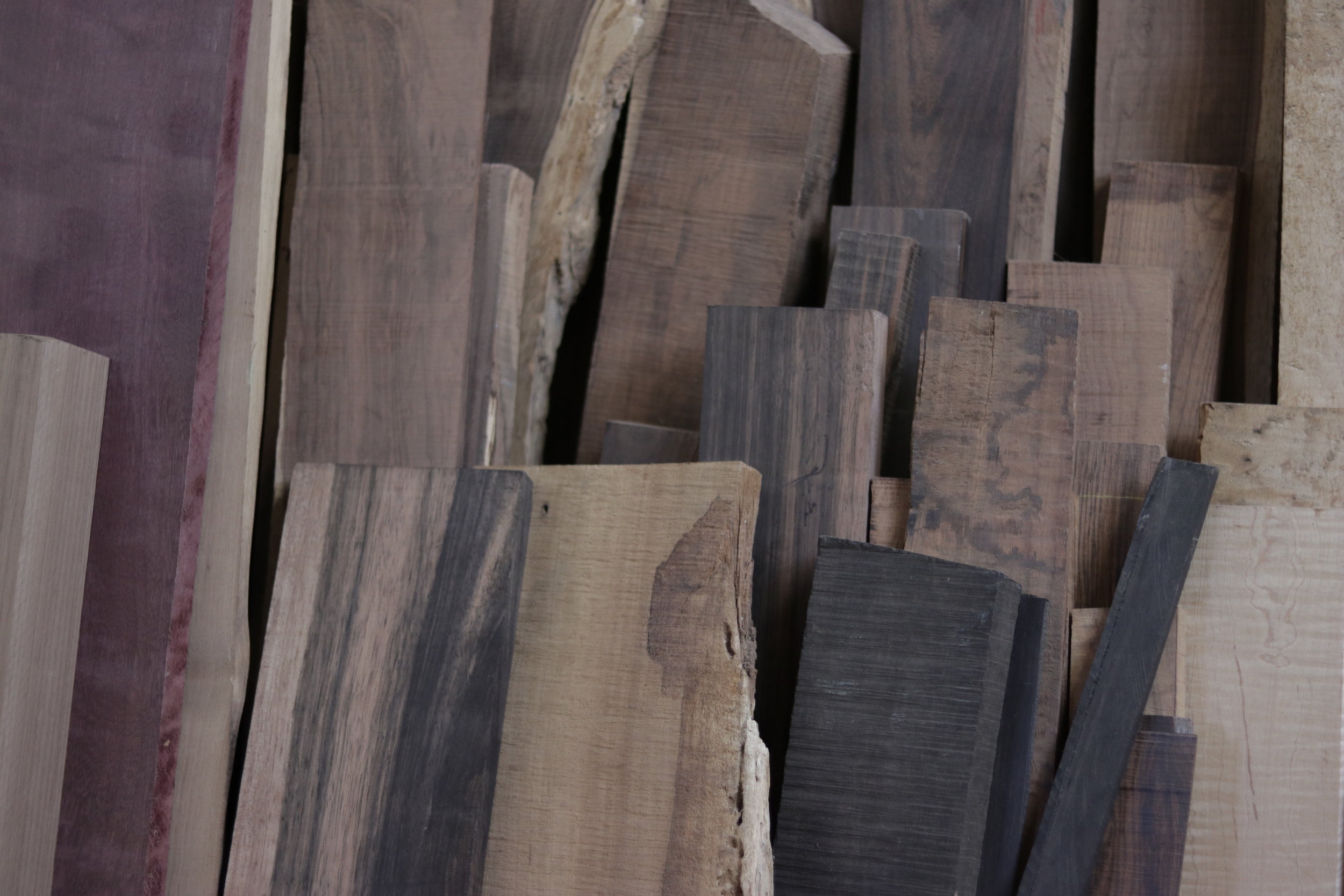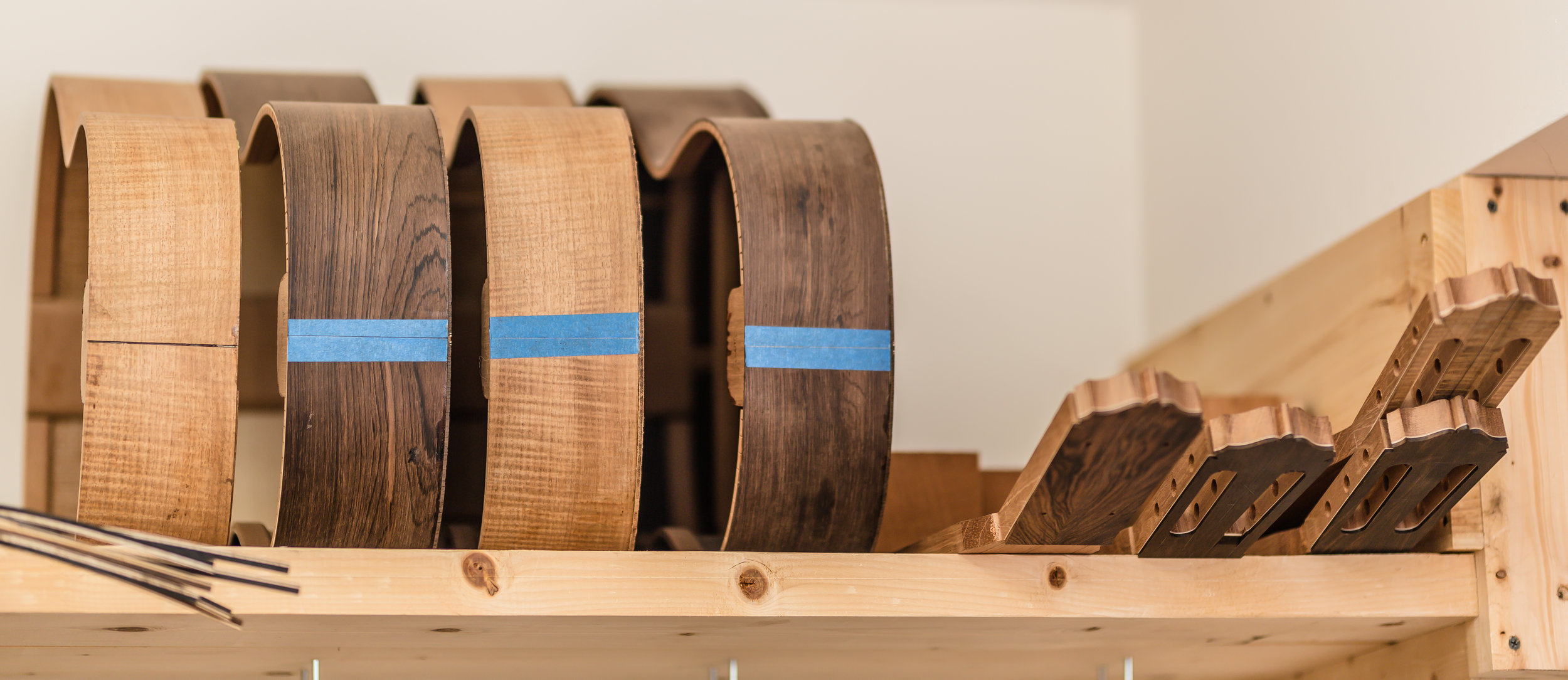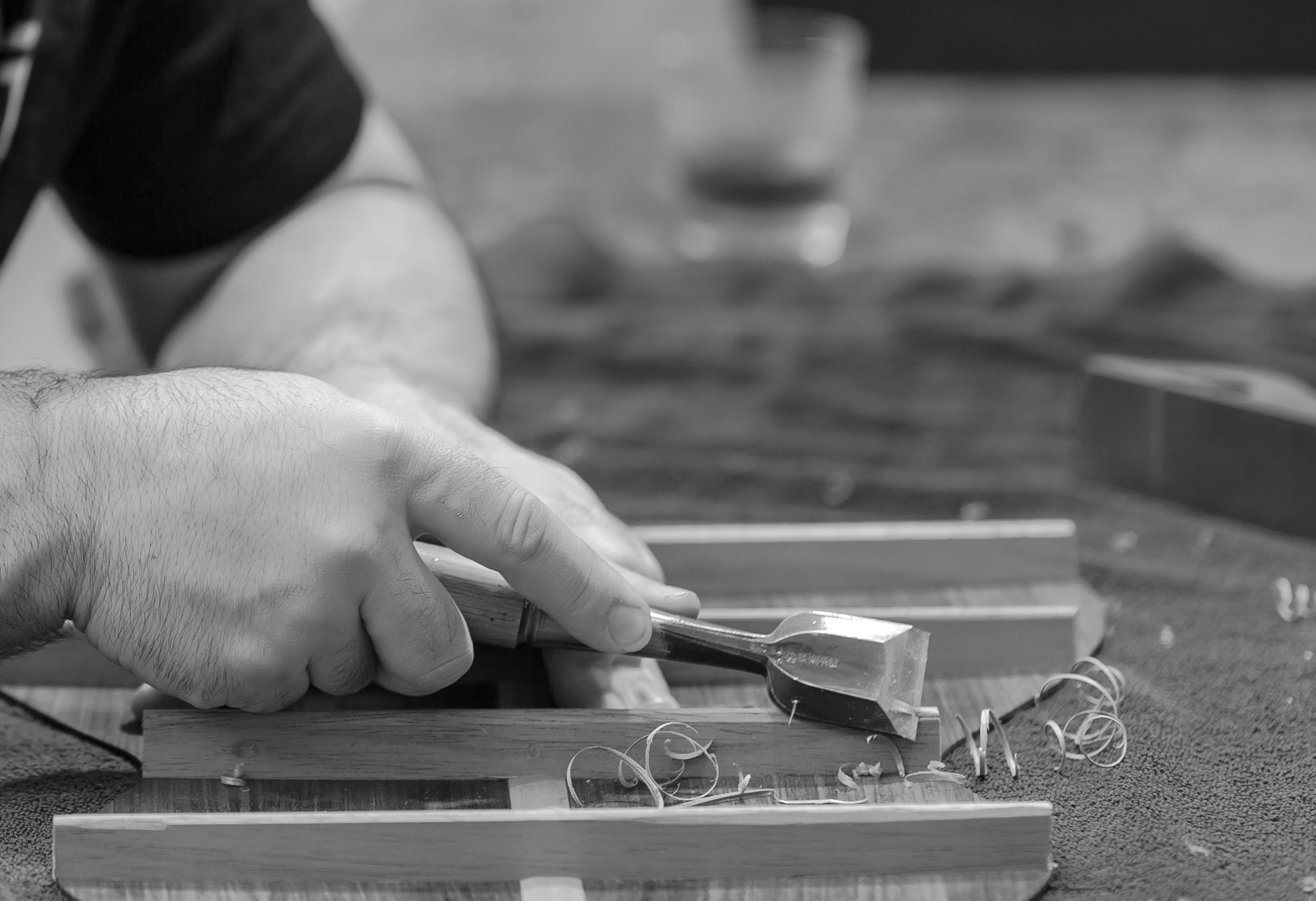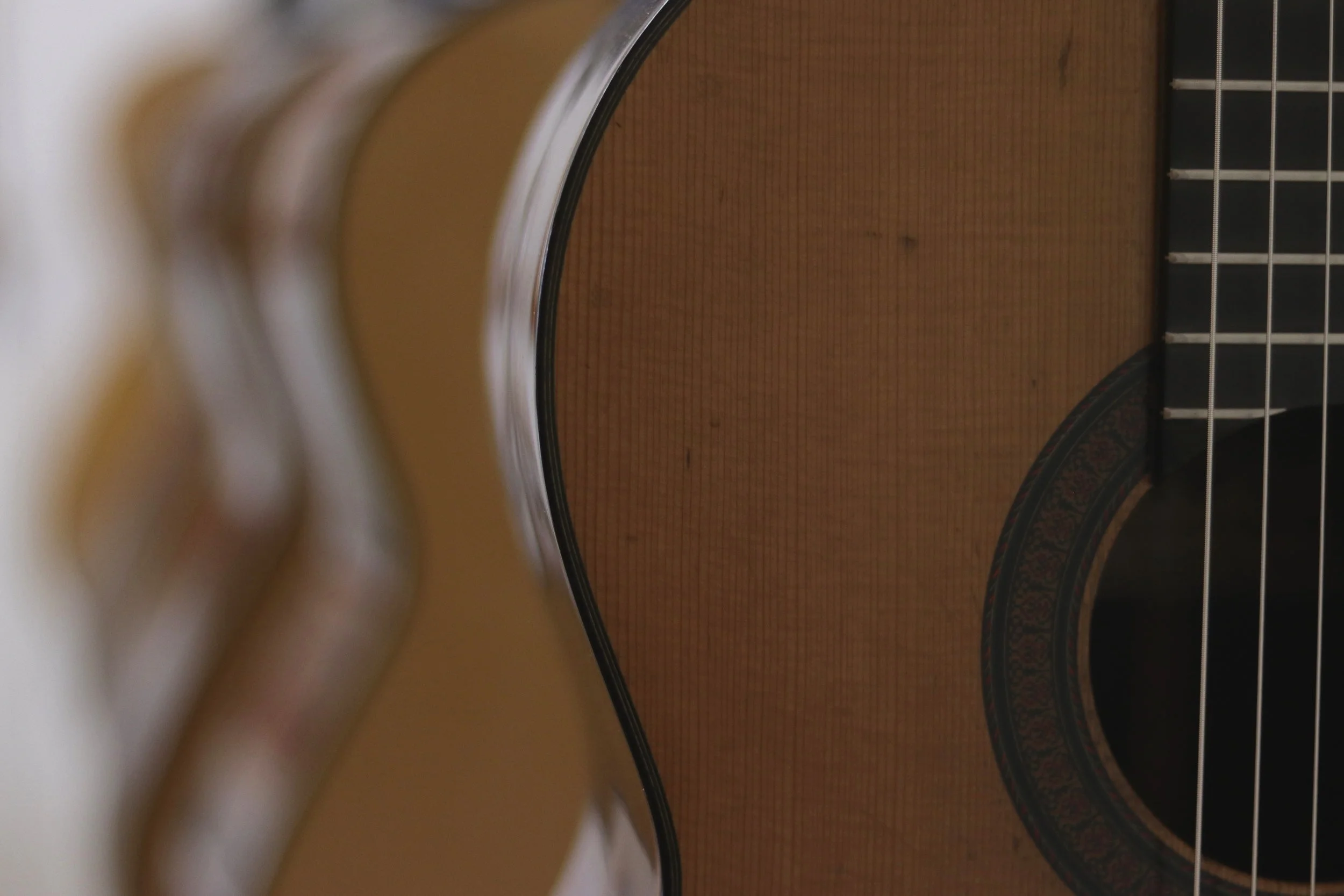For me, as a guitar-maker, it is the person with whom I am working that is the most important component in the equation.
The vision of their guitar is the starting point in making an abstract idea, reality.
I pick the materials I feel will support the desired end results and the actual design of the guitar begins to take shape from there.
I am, at heart, a traditionalist when it comes to guitars. A large component of my development as a luthier has been by studying the best examples of great historic makers. While I am located in the woods of Groton Massachusetts, I consider the base of my career to be firmly located in New York City. As such I have been very fortunate to have access to some of the finest guitars in the world. I also am a dealer of fine instruments and offer repair and restoration services. This has furthered my study of the great masters and my insight into my own work.
I am not however opposed to innovation, innovation is in fact the “tradition” of the classical guitar. I offer such options as sound-ports and elevated fingerboards for those who want them. They are yet another variable that can be employed and are incorporated into the overall design of the guitar I am building rather than an “add-on” feature. This also carries over to bracing. I use any number of fan-braced patterns, depending on the top I am using and the desired end result. I also have been working with hybrid fan/lattice patterns for my more “modern” guitars. This is to achieve some of the desired aspects of the latest developments in the guitar (namely horsepower) and avoid the common pitfall of those designs (namely a hollow or nasal sound with little or no tonal range). Whatever the design or materials I use, the guitar must possess the qualities I believe are necessary for a fine concert guitar. That is a quick and agile attack, clarity and separation of the voices, a strong fundamental, well-defined harmonic overtones, evenness of response, and beauty of tone with a large tonal and dynamic range. I do not list these qualities in any particular order of importance. They are all equally important.
In the end the satisfaction I get from my work comes from the relationship I have with my client. It is a privilege and joy for me to create their musical voice.
Click the YouTube logo to join my channel
Classical Guitars
Currently I am offering two sizes for my classical (and flamenco) guitars. My standard “concert” size and a slightly smaller size based upon the guitars of Jose Romanillos, Torres and Hauser. In both cases the actual plantilla or shape is my own, based upon study and tracings of many great guitars, among other influences, to possess curves and proportions that are, to my eye, elegant and balanced. I believe that the design and materials of the guitar are in service of the desired outcome and therefore utilize a wide variety of designs and materials.
I have large stockpiles of very old and well seasoned woods of all varieties. I use a variety of bracing patterns and such recent innovations as elevated fingerboards and soundports for those who wish to have them. Whatever path I choose begins with a clear idea of what I am trying to achieve. Once that is established, the design and materials fall into place. For those who wish for the very finest materials and aesthetics, I offer what I call my Presentation Series guitars, of which a few are featured here. Whatever materials or design I am using, I build each guitar to be the very best of which I am capable.
Shown: Spruce top classical with flame maple braid rosette and flame maple rope purfling.
2022 Cedar and Koa
Flamenco Guitars
I believe that a great flamenco guitar possesses the same qualities of a great classical guitar, but perhaps in a slightly different order. What makes a guitar ideal for flamenco is that it plays and responds in such a way that a flamenco guitarist would like to play it. Those qualities of sound are clarity, separation of the voices, speed and sharpness to the attack. These are qualities that are present in any great guitar, regardless of distinction. Likewise I want a guitar with real substance to it’s voice. I am most directly influenced by the guitars of Marcelo Barbero, notably the famous 1951 ex Sabicas. I have learned much from this guitar as well as other great examples I’ve been fortunate enough to study, such as a 1970 Manuel Reyes that I restored. In both cases the guitars have a depth to them that give them the range to play any music, even though they represent the archetype flamenco guitar. The guitars pictured here are of my own design.
